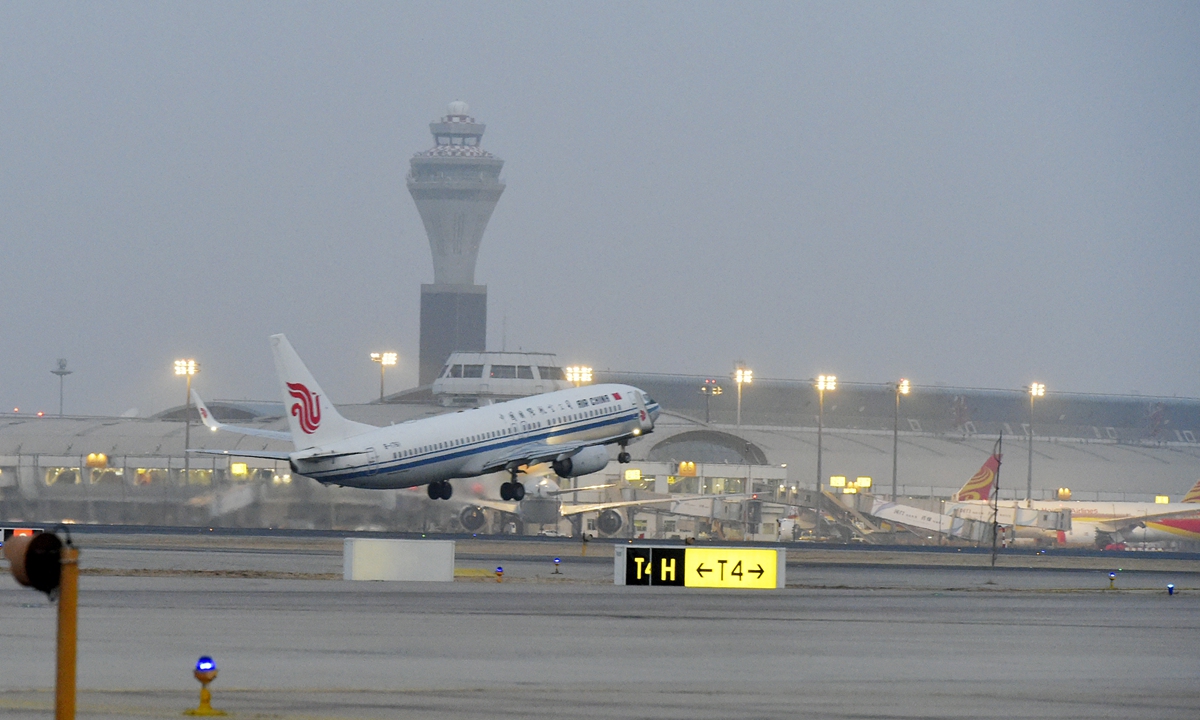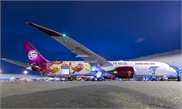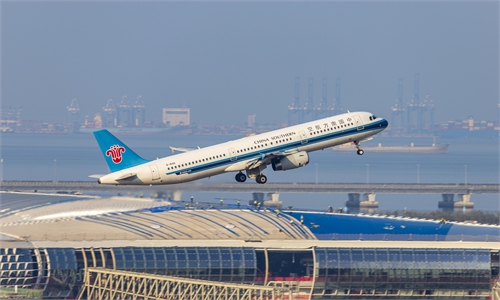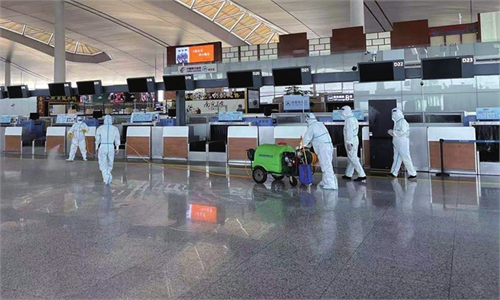Chinese airports pose mixed performance in first half
Post-virus recovery remains slow, with sliding international traffic the biggest headache

An Air China carrier takes off from the terminal 2 at the Beijing Capital International Airport in January. Photo: cnsphoto
A number of Chinese airports have released their financial statements for the first half of 2021, many with a lesser reliance on international routes recorded an impressive double-digit revenue growth thanks to a rapidly-growing freight transportation business buffering against sliding passenger numbers.
Smaller, more domestically-focused airports provided a striking contrast to the financial performance of major Chinese international airports, which were still struggling with prolonged losses - albeit a slight rebound from last year - amid sporadic coronavirus outbreaks which have acted as a handbrake to both air traffic and non-aviation income.
Some analysts said that the first-half financial reports, regardless of mixed results of air hubs and domestically-focused airports, underscores how China's aviation industry is still feeling the pinch of coronavirus with recovery remaining slow. The extent to which the sector can bounce back still hinges on the recovery of the international aviation market and local anti-epidemic efforts.
The revenue of the Xiamen International Airport Company, China's fourth-largest publicly listed airport company based in Xiamen, East China's Fujian Province, expanded 54.6 percent year-on-year to 743 million yuan ($114.9 million) in the first half, according to the company's financial report released on Tuesday. Net profit jumped to 144 million yuan, an increase of 915.93 percent year-on-year.
The astonishing growth was partly attributed to the company's efforts to diversify income sources, including opening new businesses in chartered freight flight and passenger to freighter conversions, analysts said.
According to its financial report, the Xiamen airport's cargo transportation grew 27 percent year-on-year to 162,000 tons in the first six months of 2021.
Shenzhen Airport, headquartered in Shenzhen, South China's Guangdong Province, was another airport harbor that recorded net profit growth.
The company's revenue in the first half soared 23.47 percent year-on-year to 158 million yuan, with profit expanding 159.56 percent to 90.13 million yuan, according to its financial statement released on Friday.
The growth is due to an uptick in the main aviation business, including aviation support and ground service, aviation logistics service and aviation value-added service (including advertisement), the statement noted.
Mired in loss
However, most major Chinese carriers are still struggling with losses.
China's largest airport, the Beijing Capital International Airport, saw a loss of 841 million yuan in the first six months of 2021, widening from the 738 million yuan recorded in the 2020 first half.
Its revenue also slumped 11.9 percent year-on-year to 1.747 billion yuan in the January-June period, according to its financial report released on Wednesday.
The airport traffic saw a slight increase in the first half, the financial report said, but the international passenger traffic continued contracting amid the global pandemic.
Non-aviation income, which account for 60 percent of Beijing airport's revenue, also dropped 25.8 percent as a result of dwindling international traffic.
Shanghai Pudong International Airport also experienced a similar strike from sliding international traffic. The company's first-half revenue fell 26.95 percent year-on-year to 1.804 billion yuan, suffering a net loss of 741 million yuan, down 92 percent year-on-year.
The Guangzhou Baiyun International Airport also incurred a net loss of 410 million yuan in the first half, expanding from the 168-million-yuan losses in the same period last year. In addition to international traffic, some analysts said the Delta variant outbreak in the city and its neighboring cities had also squeezed profit margins.
Qi Qi, a market watcher, told the Global Times on Wednesday that the reason why Shenzhen and Xiamen airports were not greatly affected by the outbreak is that these two airports are not major destinations for international flights, which means that their costs of putting in place strict health and safety protocols is lower.
"Only when the international flight market recovers will Chinese airports be able to raise their profit forecasts," Qi said, noting that the aviation industry's revenues also depend on the speed of global vaccination efforts.
Analysts also suggest that Chinese airports should enhance anti-epidemic measures, which could also help them secure passenger traffic and boost profits.



